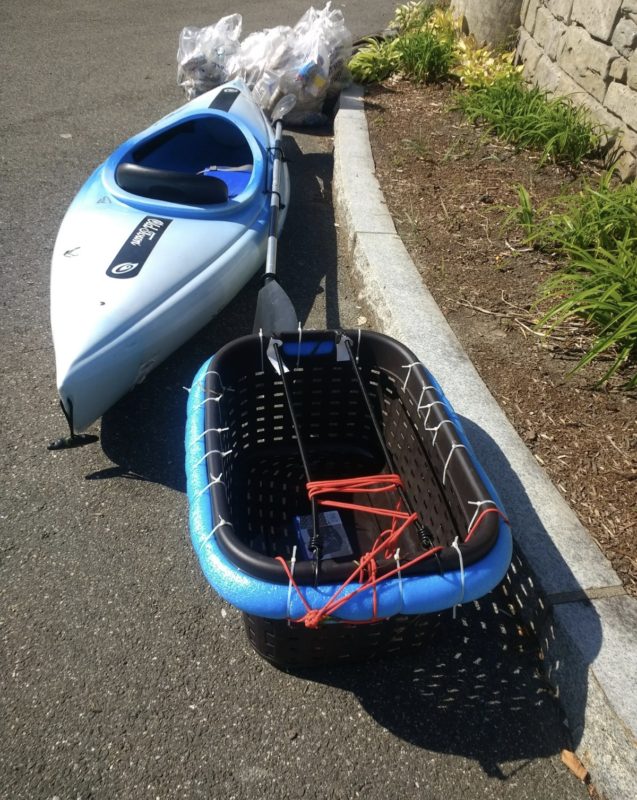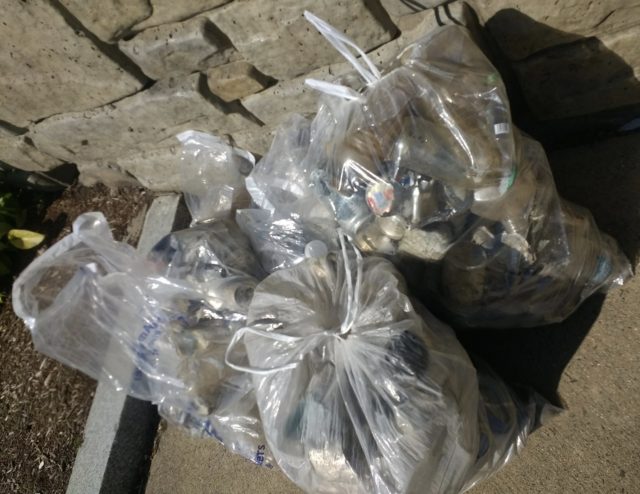 The Connecticut River begins on the boundary of Canada and the United States, in a bog, flowing 410 miles before joining Long Island Sound. In the wilderness of northern Pittsburg, New Hampshire, it is more stream than river. Its character changes completely by the time it reaches Hartford, the oldest city on the Connecticut River.
The Connecticut River begins on the boundary of Canada and the United States, in a bog, flowing 410 miles before joining Long Island Sound. In the wilderness of northern Pittsburg, New Hampshire, it is more stream than river. Its character changes completely by the time it reaches Hartford, the oldest city on the Connecticut River.
Along the way, the Connecticut River goes through some shit. A Springfield, Massachusetts pump station malfunctioned in September, releasing approximately 90,000 gallons of untreated sewage into the river. A few weeks prior, over three times that amount of raw sewage entered the river in South Hadley, MA. In 2018, a Montague, MA facility leaked 280,000 gallons of partially treated sewage. We don’t need to depress ourselves by going back beyond that.
Every September since 1996, the Connecticut River Conservancy has organized cleanups within the watershed, at sites that they or local volunteers identify as needing attention. These efforts don’t address the sewage pollution, but instead look at the mundane problem of litter and illegal dumping.
Over the course of two days last week, volunteers filled approximately forty trash bags with debris found in and along the Connecticut River at two sites in Hartford. Volunteers used kayaks and canoes, along with bicycles, to haul trash off a sandbar approximately one mile from the nearest dumpster. A fair amount of that has been recycled: plastic water bottles, aluminum cans, and glass. An astounding number of nips were removed, suggesting it is more than time to add a deposit to these items. Trash included a highway sign, large piece of styrofoam, tire stop wedge, tires, and something resembling a Chucky doll head.
Unlike an illegal dump site, which is very obvious, the litter plucked from these locations did not get itself there in any one way. Sure — some things, like the Fireball nips, were dropped in place. Others likely floated their way down river or blew off the nearby highway. Much of I-91 follows the river, and those who only drive might not realize this, but anyone who has used a pedestrian or bicycle path alongside the road is well aware: cars create lots of garbage. The wreckage from high speed crashes winds up somewhere, as does improperly secured loads. Add to that the litter that is intentionally tossed from vehicles — lots of fast food cups and wrappers. These fall down embankments and into other hard-to-reach spots. When those areas are along a river, just wait until the next flood.
 I’m not that concerned with aesthetics. I do think a lot, though, about what these materials do to our ecosystem. Our fish and seabirds should not be eating our plastic waste, nor should we be burning 70 towns’ worth of it in the South Meadows. One of the cleanup sites was in view of the incineration facility. The other was in a wooded area north of the Riverside Park boathouse. Even if we were to write off the Connecticut River itself — which I don’t believe we should — the point to remember is that what enters a river floats somewhere else. As they say, “there is no away.”
I’m not that concerned with aesthetics. I do think a lot, though, about what these materials do to our ecosystem. Our fish and seabirds should not be eating our plastic waste, nor should we be burning 70 towns’ worth of it in the South Meadows. One of the cleanup sites was in view of the incineration facility. The other was in a wooded area north of the Riverside Park boathouse. Even if we were to write off the Connecticut River itself — which I don’t believe we should — the point to remember is that what enters a river floats somewhere else. As they say, “there is no away.”
As heartening is it is to see energetic volunteers truly show up and sweat for a few hours without even needing to be bribed with the promise of food, it’s not enough to remove junk from the watershed a day or two every year. Connecticut River Conservancy has stepped up its game by starting to name names and demand corporate responsibility. We’re too far along in this mess to tiptoe around anymore and play nice.
Tired of Trash
Along the way, the Connecticut River goes through some shit. A Springfield, Massachusetts pump station malfunctioned in September, releasing approximately 90,000 gallons of untreated sewage into the river. A few weeks prior, over three times that amount of raw sewage entered the river in South Hadley, MA. In 2018, a Montague, MA facility leaked 280,000 gallons of partially treated sewage. We don’t need to depress ourselves by going back beyond that.
Every September since 1996, the Connecticut River Conservancy has organized cleanups within the watershed, at sites that they or local volunteers identify as needing attention. These efforts don’t address the sewage pollution, but instead look at the mundane problem of litter and illegal dumping.
Over the course of two days last week, volunteers filled approximately forty trash bags with debris found in and along the Connecticut River at two sites in Hartford. Volunteers used kayaks and canoes, along with bicycles, to haul trash off a sandbar approximately one mile from the nearest dumpster. A fair amount of that has been recycled: plastic water bottles, aluminum cans, and glass. An astounding number of nips were removed, suggesting it is more than time to add a deposit to these items. Trash included a highway sign, large piece of styrofoam, tire stop wedge, tires, and something resembling a Chucky doll head.
Unlike an illegal dump site, which is very obvious, the litter plucked from these locations did not get itself there in any one way. Sure — some things, like the Fireball nips, were dropped in place. Others likely floated their way down river or blew off the nearby highway. Much of I-91 follows the river, and those who only drive might not realize this, but anyone who has used a pedestrian or bicycle path alongside the road is well aware: cars create lots of garbage. The wreckage from high speed crashes winds up somewhere, as does improperly secured loads. Add to that the litter that is intentionally tossed from vehicles — lots of fast food cups and wrappers. These fall down embankments and into other hard-to-reach spots. When those areas are along a river, just wait until the next flood.
As heartening is it is to see energetic volunteers truly show up and sweat for a few hours without even needing to be bribed with the promise of food, it’s not enough to remove junk from the watershed a day or two every year. Connecticut River Conservancy has stepped up its game by starting to name names and demand corporate responsibility. We’re too far along in this mess to tiptoe around anymore and play nice.
Related Posts
Dispatches from a Democrat City
Casa Linda: Buckingham
Free Acupuncture for Vets